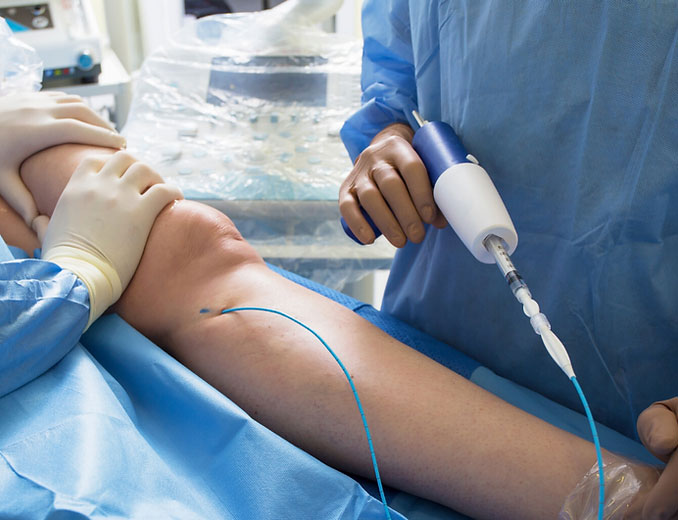Vein Disorders
In venous insufficiency, blood doesn’t flow back properly to the heart, causing blood to pool in the veins in your legs.
Several factors can cause venous insufficiency, though it’s most commonly caused by blood clots (deep vein thrombosis) and varicose veins.
When forward flow through the veins is obstructed — such as in the case of a blood clot — blood builds up below the clot, which can lead to venous insufficiency.
In varicose veins, the valves are often missing or impaired, and blood leaks back through the damaged valves.
In some cases, weakness in the leg muscles that squeeze blood forward can also contribute to venous insufficiency.
Risk factors for developing venous insufficiency include female gender, advanced age, history of blood clots, obesity, pregnancy, smoking, prolonged standing, and trauma.
Symptoms include swelling of the legs or ankles (edema), pain, leg cramps, aching, throbbing, itching, thickening or darkening of skin on your legs, a feeling of heaviness in your legs, or leg ulcers.
Treatment Options
Comprehensive venous care
We encourage initial attempts at conservative treatment through weight control, low salt-diet, medically graded compression stockings, regular exercises, and leg elevation.
For persistent disease, we offer a variety of non-surgical treatment options focus on destroying or removing problem veins and address conditions like spider veins and varicose veins.
Endovenous ablation
15 minute, office based procedure
Endovenous Ablation uses heat to treat a varicose vein. Closing off a problem vein reduces pressure on smaller, side-branch varicose veins. Endovenous ablation involves only one needle puncture, not incisions.

Nonthermal vein closure
A Happier, Healthier You

Sclerotherapy
Nancy Chin has been performing venous interventions for 30 years.
